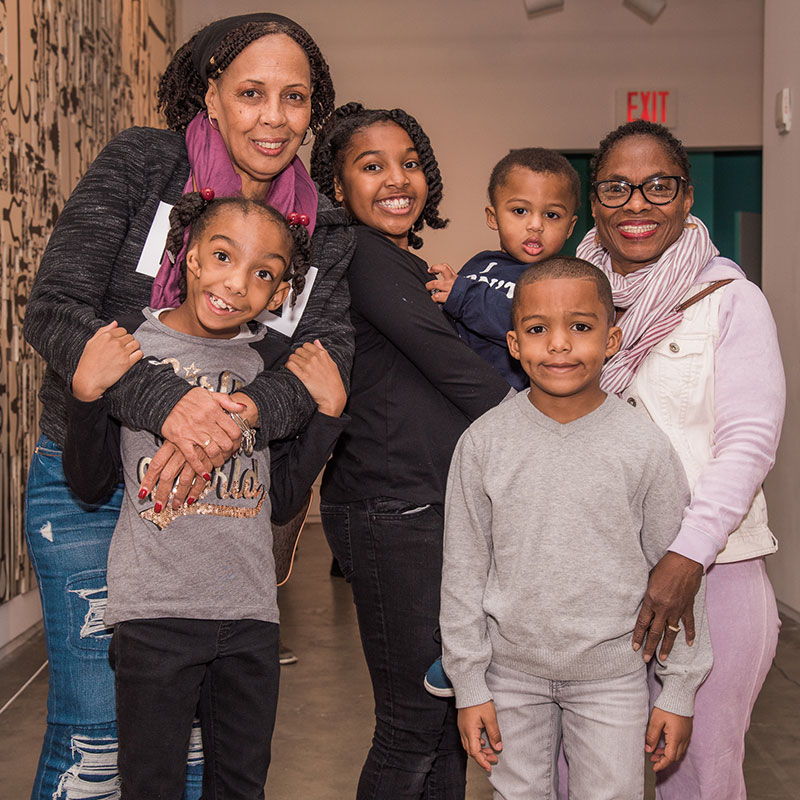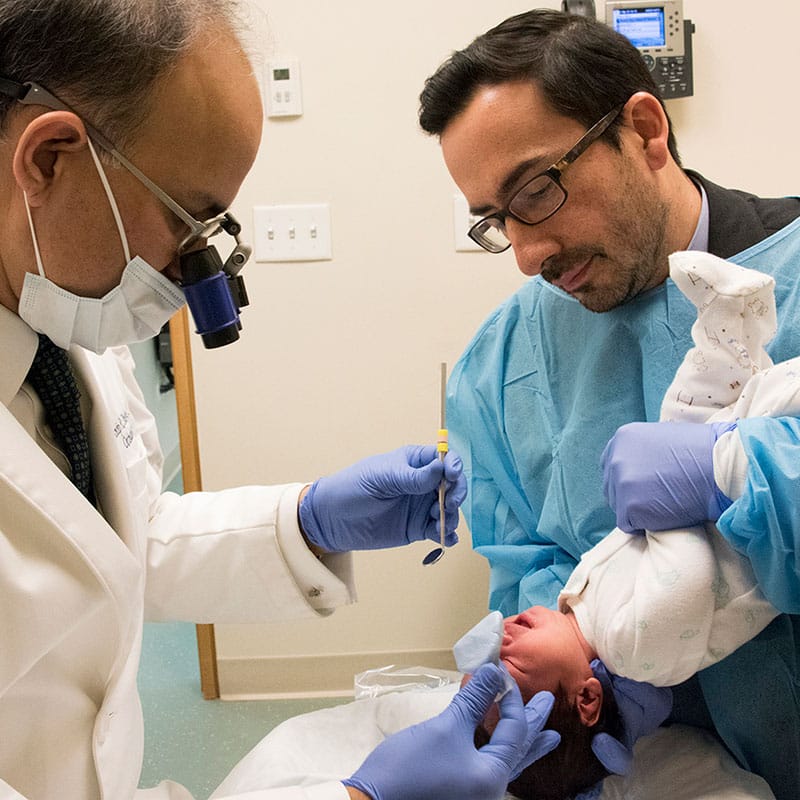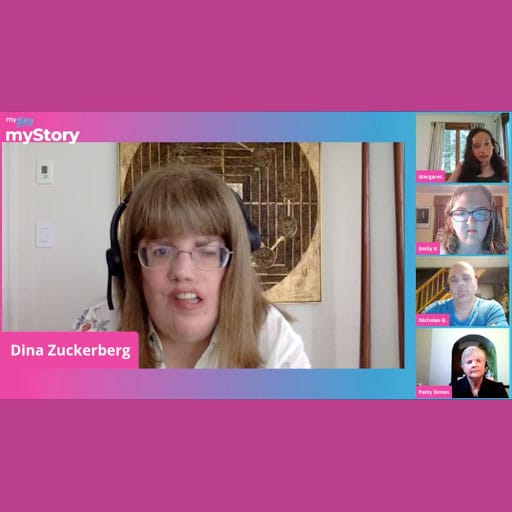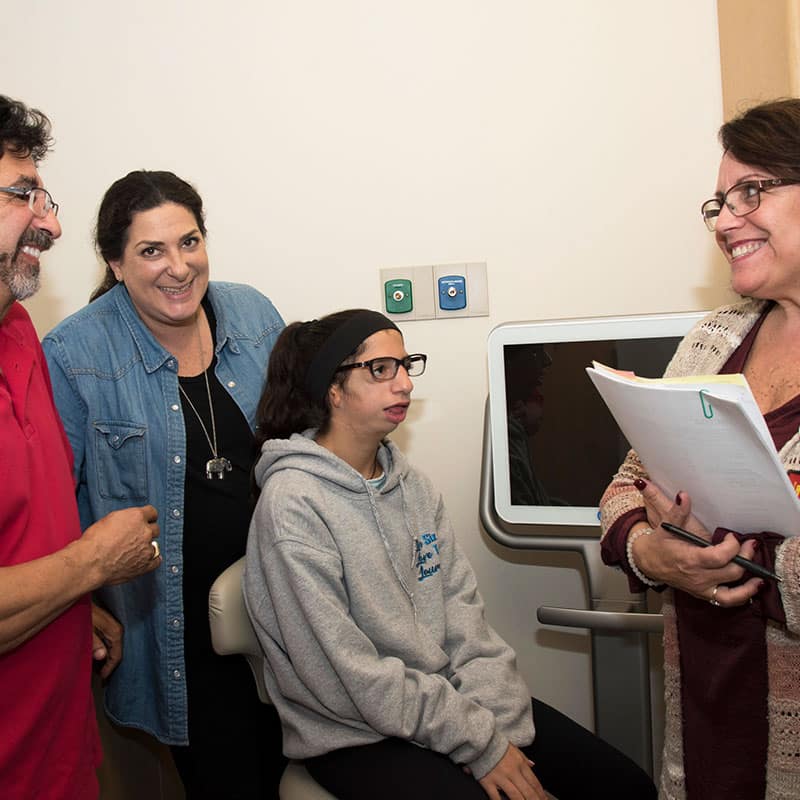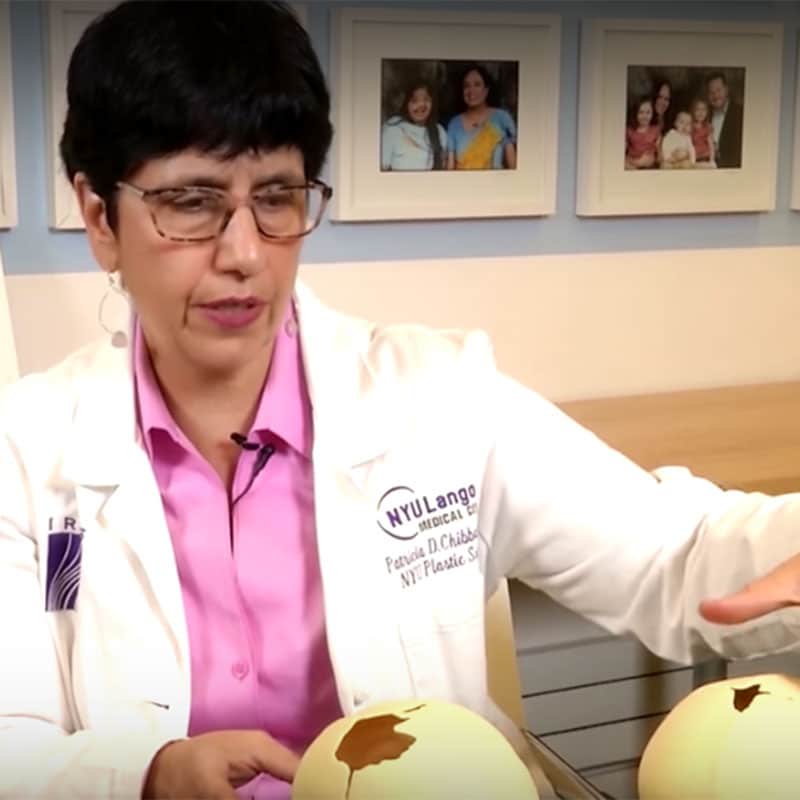Cleft Lip and/or Palate
In This Article
Click to jump to your selected section.
What is Cleft Lip and/or Palate?
Prevalence
Causes
Types of Cleft Lip and/or Palate
Diagnosing
Treatments & Procedures
Living with Cleft Lip and/or Palate
Potential Complications and Challenges
Meet a Member of the myFace Community
Support for People Living with Cleft Lip/Palate
Resources for the Craniofacial Community
Home > Craniofacial Conditions > Cleft Lip and/or Palate
Learn About Cleft Lip and/or Palate
Cleft lip alone, cleft lip with cleft palate, or cleft palate alone, are the most commonly occurring congenital facial anomalies.
What is Cleft Lip and/or Palate?
During weeks 5-12 of pregnancy, the right and left sides of the lip and the palate (roof of the mouth) grow together in the developing baby. Sometimes, however, the skin, muscle, and bone tissues do not fuse completely, resulting in a cleft lip (split of the upper lip), cleft palate (split of the roof of the mouth), or both.
Clefts are often classified into two groups: syndromic (30%) and nonsyndromic (70%). Syndromic clefts are those caused by chromosomal abnormalities or single gene mutations and are often associated with other congenital anomalies and developmental delays known as syndromes. There are over 100 syndromes that may include cleft lip/palate, including Treacher Collins syndrome (TCS), Apert Syndrome, Pierre Robin Sequence, and deletion of chromosome 22q11.
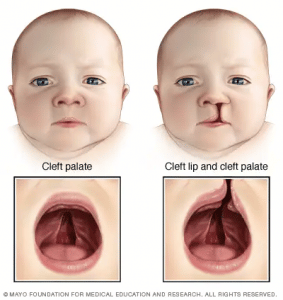
Used with permission of Mayo Foundation for Medical Education and Research, all rights reserved.
Prevalence of Cleft Lip and/or Palate
About 1 in every 1,600 babies in the United States is born with a cleft lip or/and cleft palate. Approximately 1 in every 2,800 babies is born with a cleft lip alone in the United States, while 1 in every 1,700 babies is born with a cleft palate alone.
How common is Cleft lip/palate?
Cleft lip and/or Palate can affect families of all backgrounds. However, there are some differences prevalence among various racial and ethnic groups in the United States, as follows:
- Cleft lip alone and cleft lip with cleft palate affects Native Americans at the highest rate (14.3 cases per 10,000 births).
- African-American children are affected at the lowest rate (5.8 cases per 10,000 births).
- Asian/Pacific Islander Americans and Hispanic Americans also have a higher rate of cleft lip/palate compared to Caucasians. Cleft palate alone, however, seems to affect all races and ethnicities at a similar rate.
In addition to racial and ethic differences in the prevalence of cleft lip and palate, there are also gender differences in its prevalence. Cleft lip alone and cleft lip with cleft palate occur twice as often in males as in females. In contrast, cleft palate alone occurs more often in females compared to males.
What are the Causes of Cleft Lip and/or Palate?
The exact cause of cleft lip and palate is unknown, but nonsyndromic cases of cleft lip/palate may be due to either genetic or environmental factors.
There are also many environmental factors that have been associated with increased risk of cleft lip and palate, including:
- Exposure to various drugs (anti-seizure medications, ondansetron, diazepam, nitrofurantoin, corticosteroids, methotrexate) during pregnancy
- Maternal tobacco or alcohol use
- Maternal folate deficiency during pregnancy
There are other environmental factors and plausible causes that we outline.
Read more about the Causes of Cleft Lip and/or Palate →
Types of Cleft Lip and/or Palate
Clefts can vary a great deal in their severity; for example, a mild form of cleft lip may present as a slight notch in the upper lip, while the most severe forms can present as a complete separation of the upper lip that extends into the nose. Clefts can also occur on one side of the lip only (“unilateral cleft lip”) or on both sides (“bilateral cleft”) of the upper lip. A complete cleft lip extends into the nose, while an incomplete cleft lip does not extend into the nose.
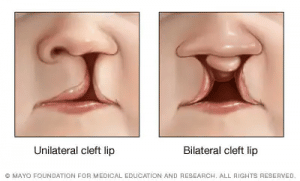
Used with permission of Mayo Foundation for Medical Education and Research, all rights reserved.
Read more about the Types of Cleft Lip and/or Palate →
Diagnosing Cleft Lip and/or Palate
Many cases of cleft lip are diagnosed during pregnancy. Advances in prenatal ultrasound have made it possible to identify fetuses with cleft lip as early as weeks 13 to 14 of pregnancy. In the second trimester, assessment for cleft lip is part of the routine obstetric exam. If a cleft lip is detected on ultrasound, the palate is also carefully assessed, since the majority of infants with cleft lip also have cleft palate. However, standard prenatal ultrasounds are rarely able to detect cases of cleft palate alone.
Read more about Diagnosing Cleft Lip and/or Palate →
Treatments & Procedures for Cleft Lip and/or Palate
A child with a cleft lip/palate may require a variety of treatments and services depending on the severity of the cleft – especially if it is associated with a syndrome or other congenital anomaly. The goals of treatment for the cleft(s) are to ensure normal breathing, feeding, hearing, speech and language development, and maxillofacial growth while preventing long-term complications.
Read more about Treatments & Procedures for Cleft Lip and/or Palate →
Living with Cleft Lip and/or Palate
Caring for a child with cleft lip and/or palate can be complex depending on the severity of the case. Families should be prepared to work with a team of doctors and specialists to care for a child with a cleft even after the initial repair and reconstructive procedures have been completed. These specialists on a patient’s comprehensive care team can include surgeons (who specialize in oral, plastic, and ear/nose/throat (ENT) surgeries), ear, nose, throat specialists (ENTs), pediatricians, orthodontists, auditory specialists, speech therapists, nutritionists, genetic counselors, social workers, and psychologists.
Read more about Living with Cleft Lip and/or Palate →
Potential Complications and Challenges Experienced by Children with Cleft Lip and/or Palate
Even after surgery, children living with clefts can continue to face challenges depending on the type and severity of the cleft. These complications may require additional treatments and support services.
Meet a Member of the myFace Community
Read Wyatt’s story, born with Cleft Lip & Palate →
Representation of Cleft Lip/Palate in the Media
Learn more about Disney’s Firebuds episode, “Cleft Hood” →
myFace Provides Support for People Living with Cleft Lip/Palate and Other Craniofacial Conditions
myFace provides a variety of direct services and educational programs to help meet the needs of the craniofacial community, including:
(1) myFace Virtual Support Groups provide counsel and community for individuals and their families living with facial differences. These help participants to feel safe, supported, and never alone. myFace offers Support Groups for adults, adolescents, and both English-speaking and Spanish-speaking parents.
(2) Parent Guides provide resources and guidance to assist parents as they support their child’s journey.
(3) Transforming Lives Webinar Series offers webinars with craniofacial experts on topics of interest to the community.
(4) myFace, myStory Podcast Series offers monthly interviews and roundtable discussions on topics of interest to the craniofacial community.
(5) myFace’s Guide to Craniofacial Surgeries serves as a guide to patients’ surgical experience, providing in-depth information on 6 of the most common craniofacial surgeries.
(6) myFace’s Your Impact Newsletter provides in-depth quarterly updates for the community, while the myFace Email Listserv provides Monthly Updates and other communications about program outcomes, upcoming events, and more.
(7) myFace Apartments provide free housing for out-of-town families seeking treatment in New York City.
(8) myFace Wonder Project and school assemblies provides students with the tools they need to unite against bullying and to implement acts of kindness in their schools and in their communities.
(9) myFace Events provide opportunities for the craniofacial community to gather together.
References
- Cleft lip & cleft palate. American Society of Craniofacial Surgeons. https://ascfs.org/Patients/Conditions/Cleft-Lip-Palate.cgi Accessed April 8, 2022.
- Cleft lip and cleft palate. Mayo Clinic Diseases & Conditions. Reviewed May 22, 2018. https://www.mayoclinic.org/diseases-conditions/cleft-palate/symptoms-causes/syc-20370985. Accessed April 8, 2022.
- Cleft lip and cleft palate. Merck Manual on Overview of Congenital Craniofacial Abnormalities. Reviewed May 2020. https://www.merckmanuals.com/professional/pediatrics/congenital-craniofacial-and-musculoskeletal-abnormalities/cleft-lip-and-cleft-palate. Accessed April 8, 2022
- Cleft lip and cleft palate (the basics). UpToDate Patient Education. https://www.cdc.gov/ncbddd/birthdefects/cleftlip.html Accessed April 8, 2022.
- Etiology, prenatal diagnosis, obstetric management, and recurrence of cleft lip and/or plate. UpToDate. Reviewed March 2022. https://www.uptodate.com/contents/etiology-prenatal-diagnosis-obstetric-management-and-recurrence-of-cleft-lip-and-or-palate Accessed April 8, 2022.
- Worley ML, Patel KG, Kilpatrick LA. Cleft lip and palate. Clin Perinatol. 2018; 45(5): 661-678.
- Vyas T, Gupta P, Kumar S, et al. Cleft of lip and palate: a review. J Family Med Prim Care. 2020; 9(6): 2621-2625. (Full article online: https://www.ncbi.nlm.nih.gov/pmc/articles/PMC7491837/)
In This Article
Click to jump to your selected section.

